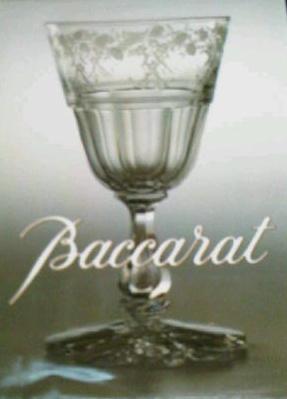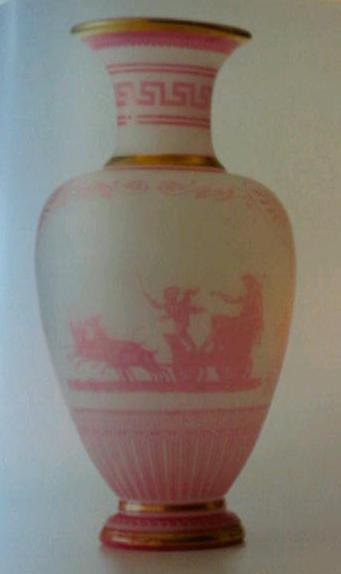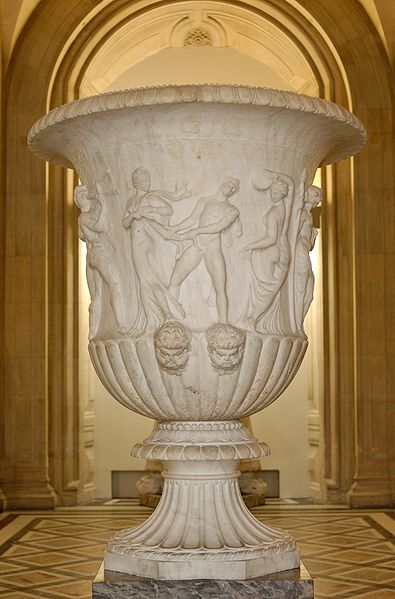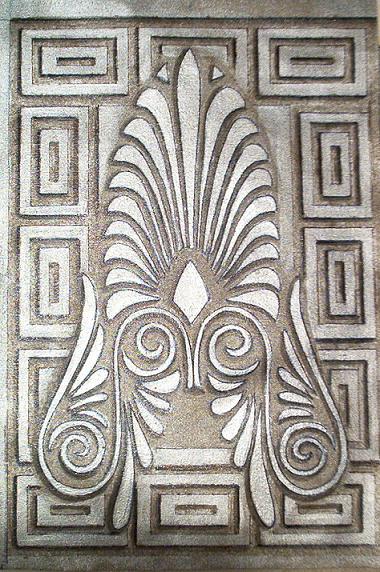The opaline ground overlaid in pink and finely acid-etched to depict a draped Bacchus seated in a chariot drawn by tigers, and a scantily clad Ariadne seated in a chariot drawn by ibex, the sides decorated with a palmette motif below a fretwork band
Each vase: 17 ½ in (44.5cm) high
cf. Jean-Louis Curtis, Baccarat (1992), p.223
Jane Shadel Spillman, Glass from World’s Fairs (1986), pp. 21-22, fig. 8
The celebrated blue lidded punch-bowl with goblets, tray and ladle, exhibited at the Paris Exposition of 1867, is now in the Corning Museum of Glass, and an identical acid-etched glass vase can be found at the Musée d’Orsay and the Chrysler Museum in Virginia.
Overview
Baccarat is universally acknowledged as one of the pre-eminent glass manufacturing firms. The firm, which was best known as the Compagnie des Cristalleries de Baccarat, was founded in 1764 under the patronage of Louis XV as Renault et Compagnie, both to provide employment and to compete with the Bohemian glass industry. At the beginning of the 19th century, the company began to flourish as the effects of the Napoleonic Wars abated, and its reputation was consolidated by the official approval of various sovereigns and heads of state. At the 1823 Exposition Nationale in Paris, Louis XVIII was said to have particularly admired Baccarat’s crystalware, appreciating its ‘beautiful workmanship’.
Charles X’s visit to the firm in 1828 had significant repercussions for the company. Baccarat presented the monarch with a gift of two magnificent Medici vases, a large crystal ewer, a 15-piece service and five-piece water set. The king then ordered a dinner service for the Tuilleries, while the Duchess d’Angoulême personally chose a set of 18 glasses, described by her as ‘...sturdy, balanced, perfect’. Later Louis-Philippe and Napoleon II also visited the crystalworks and were followed by a succession of French presidents and foreign heads of state.
Joining the company in 1841, François-Eugène de Fontenay soon discovered that the addition of nickel oxide in the glass manufacturing process produced a perfectly clear product, resembling precious rock crystal. As a result, the Baccarat company was awarded a Gold Medal at the Expositions des produits de l’industrie française in 1855. This is just one of many technical innovations and improvements discovered by Baccarat. In 1867, the firm exhibited a gigantic fountain 24 feet tall, with a basin ten feet in diameter, which ‘simply took visitors breath away’.
Since the early years of the 19th century it has remained one of the great French companies producing the very best quality in glassware.


















